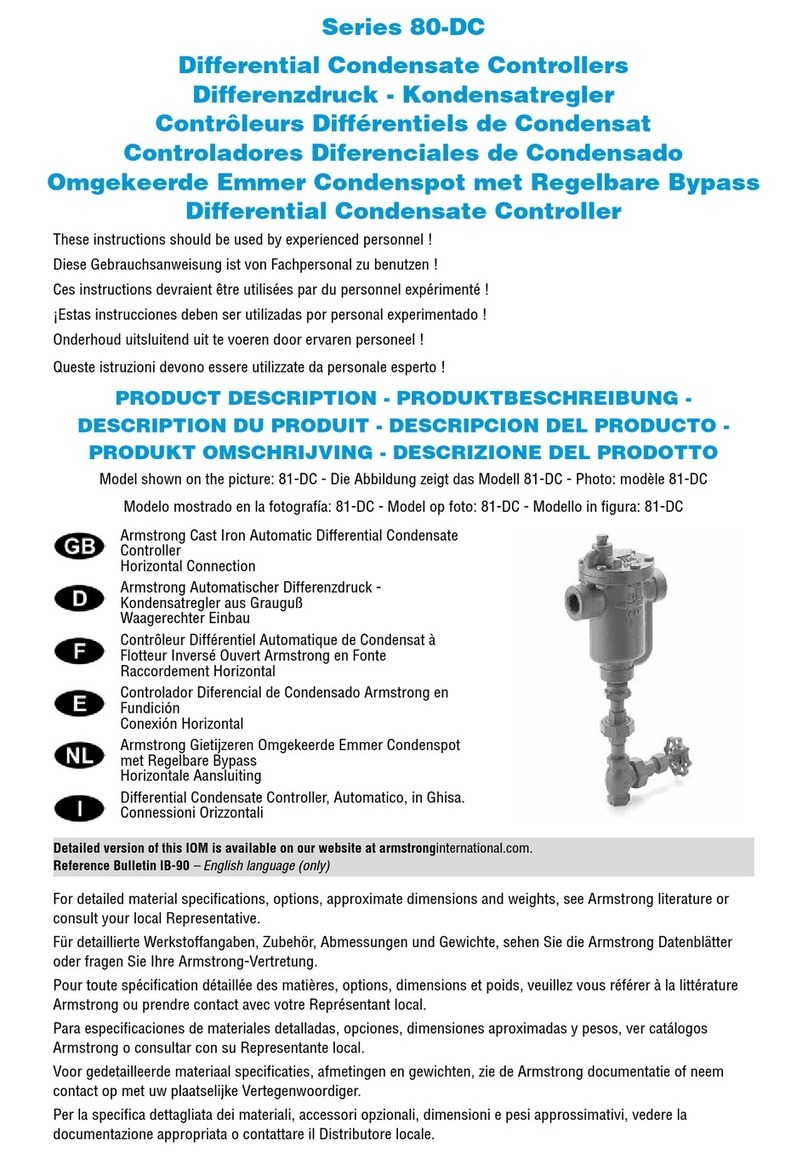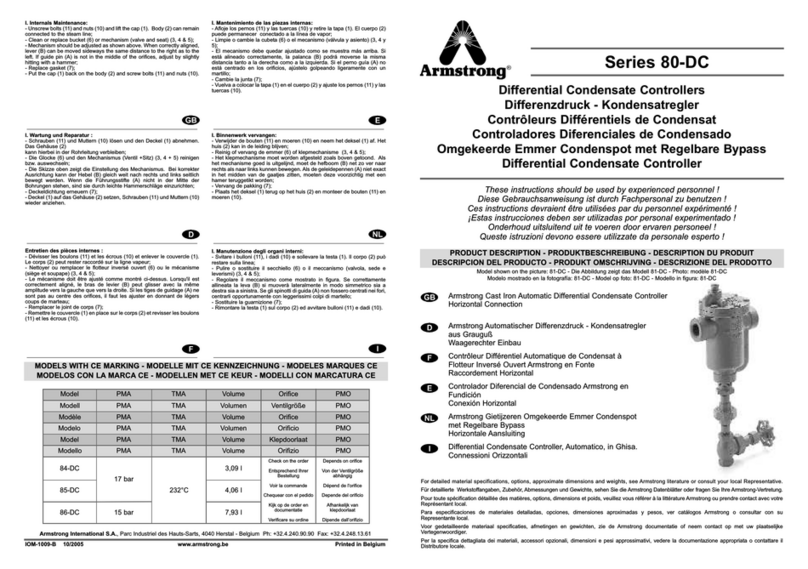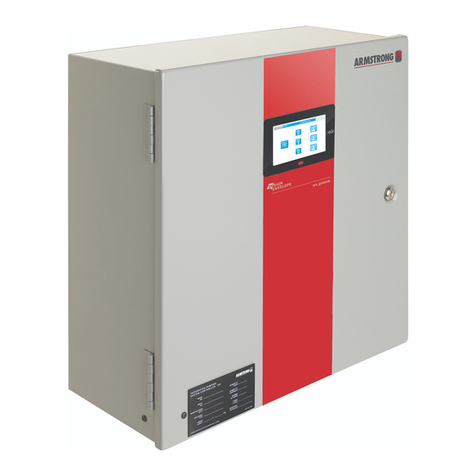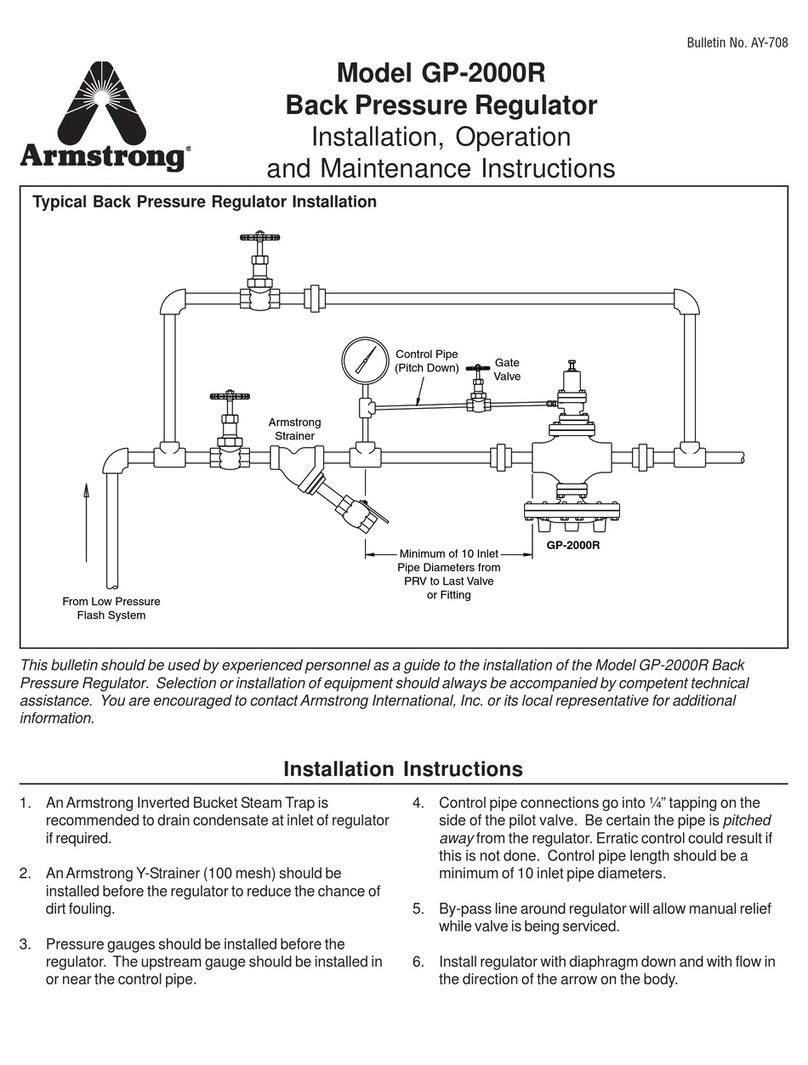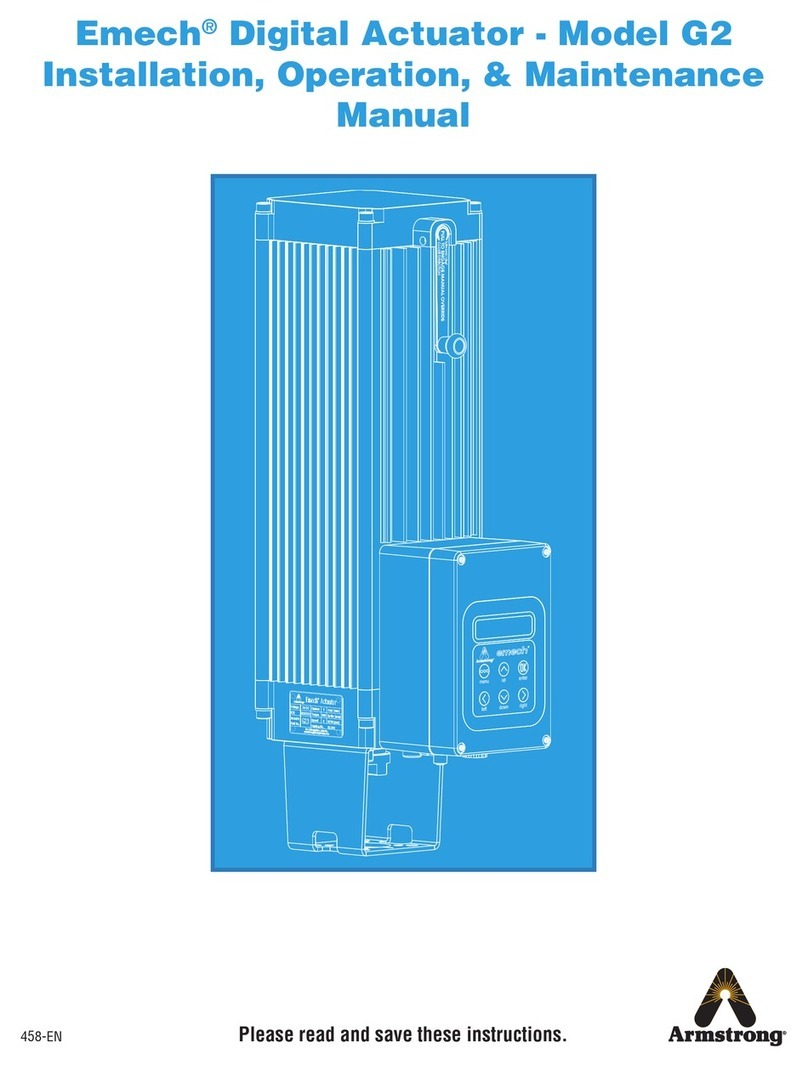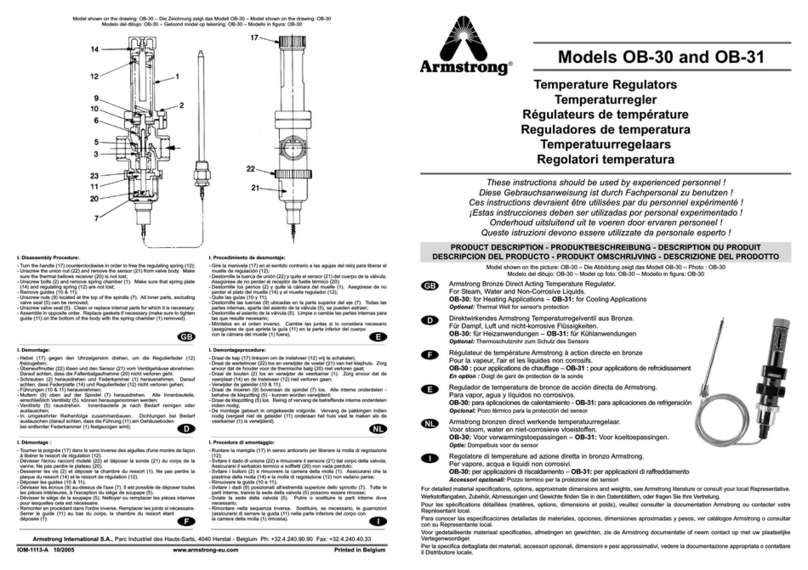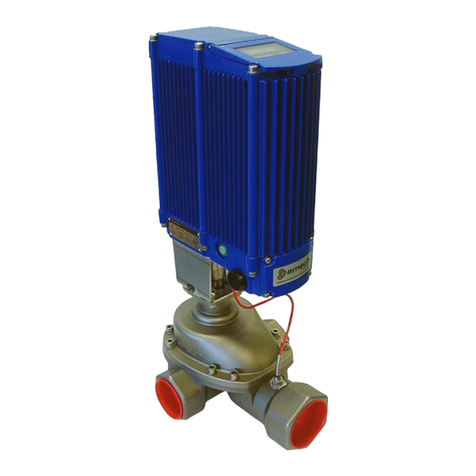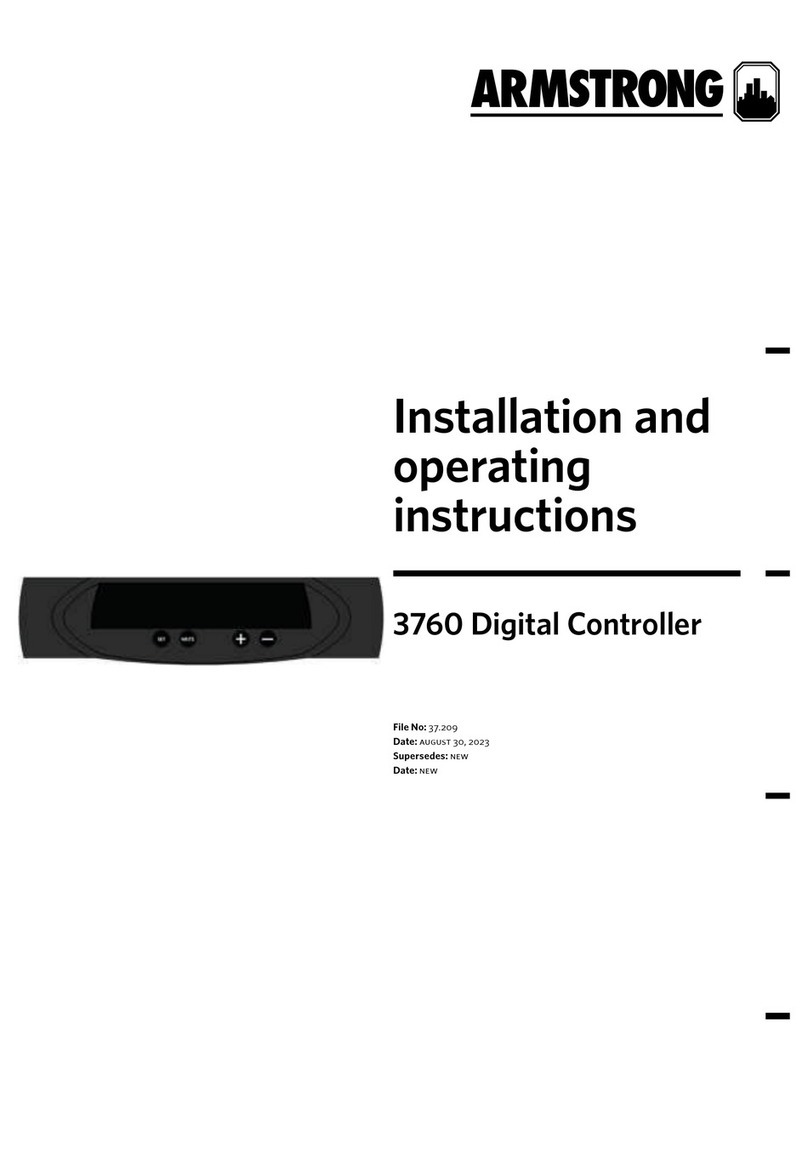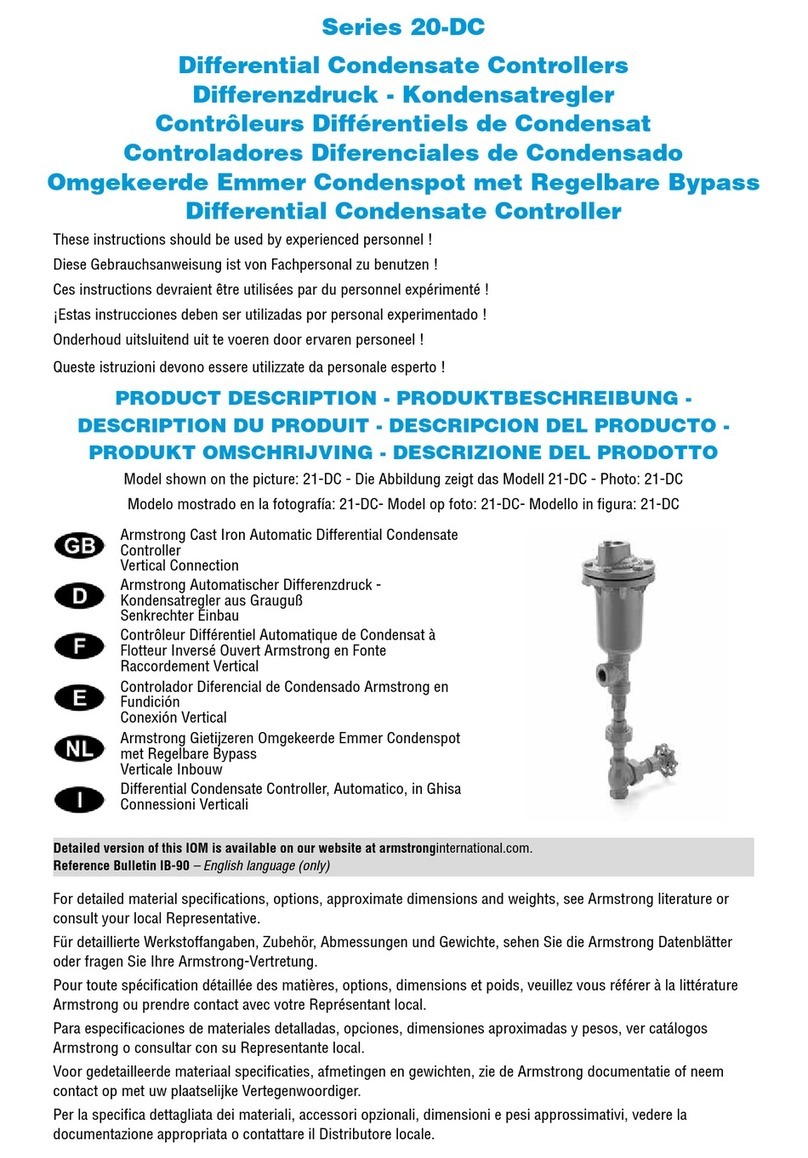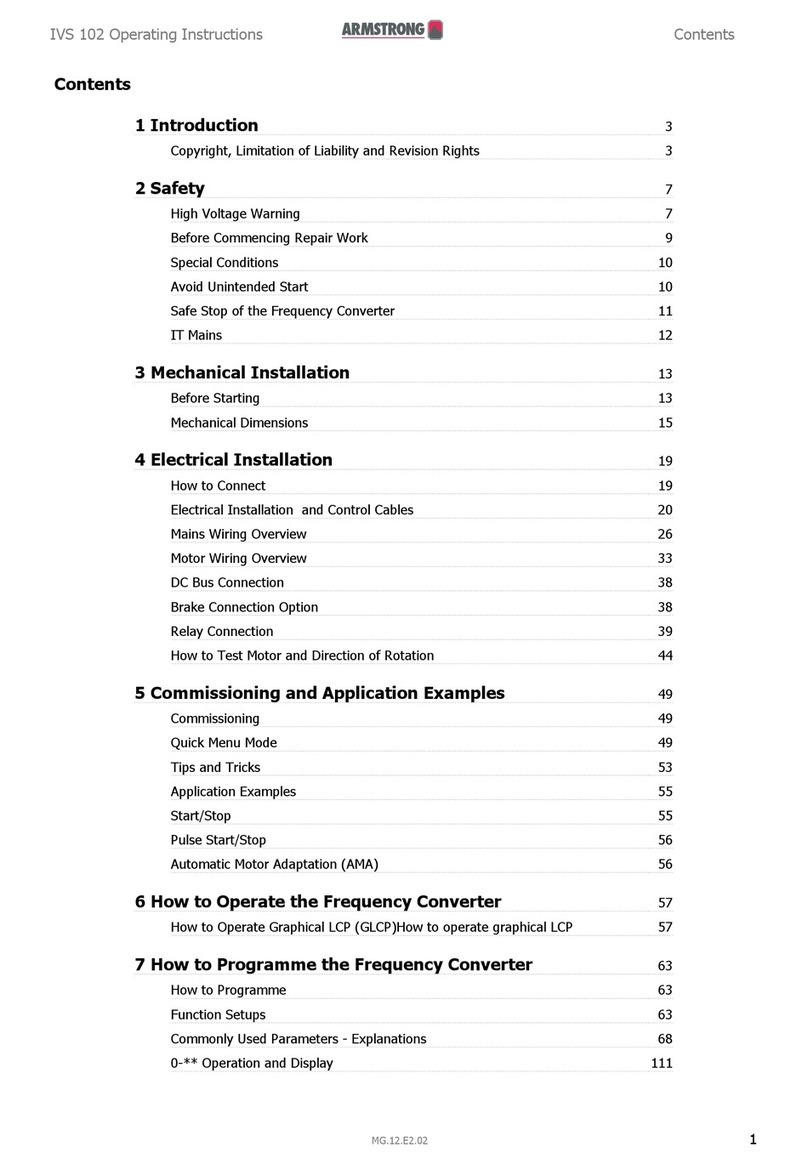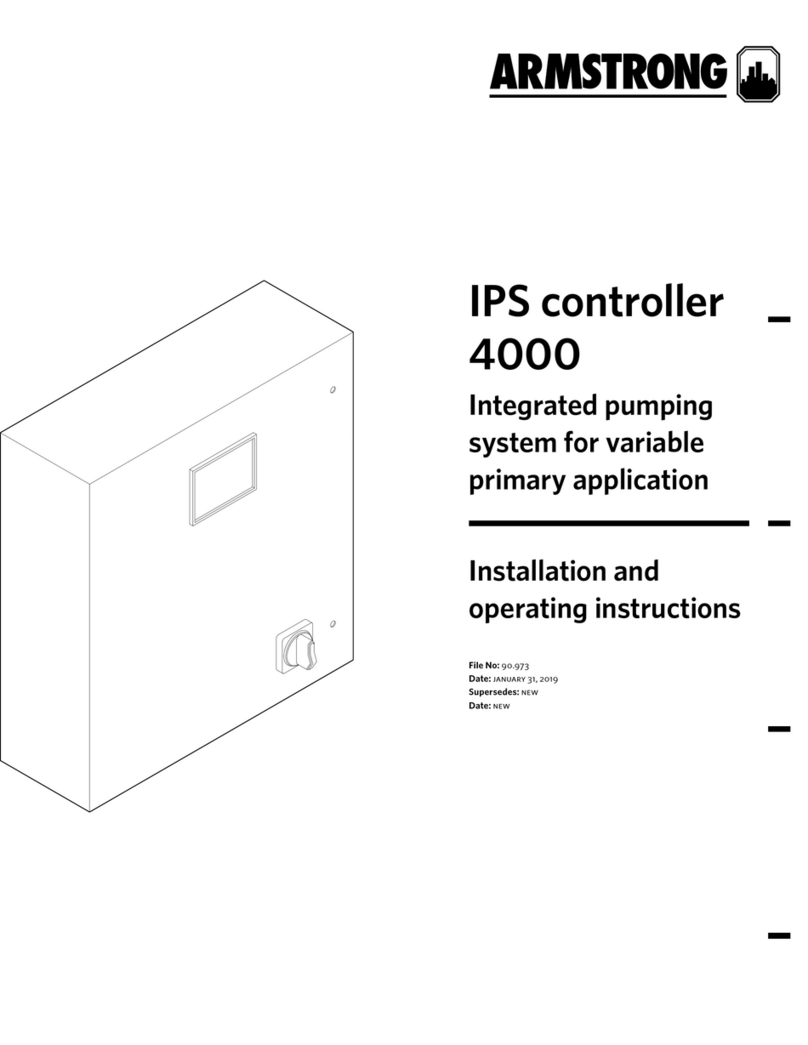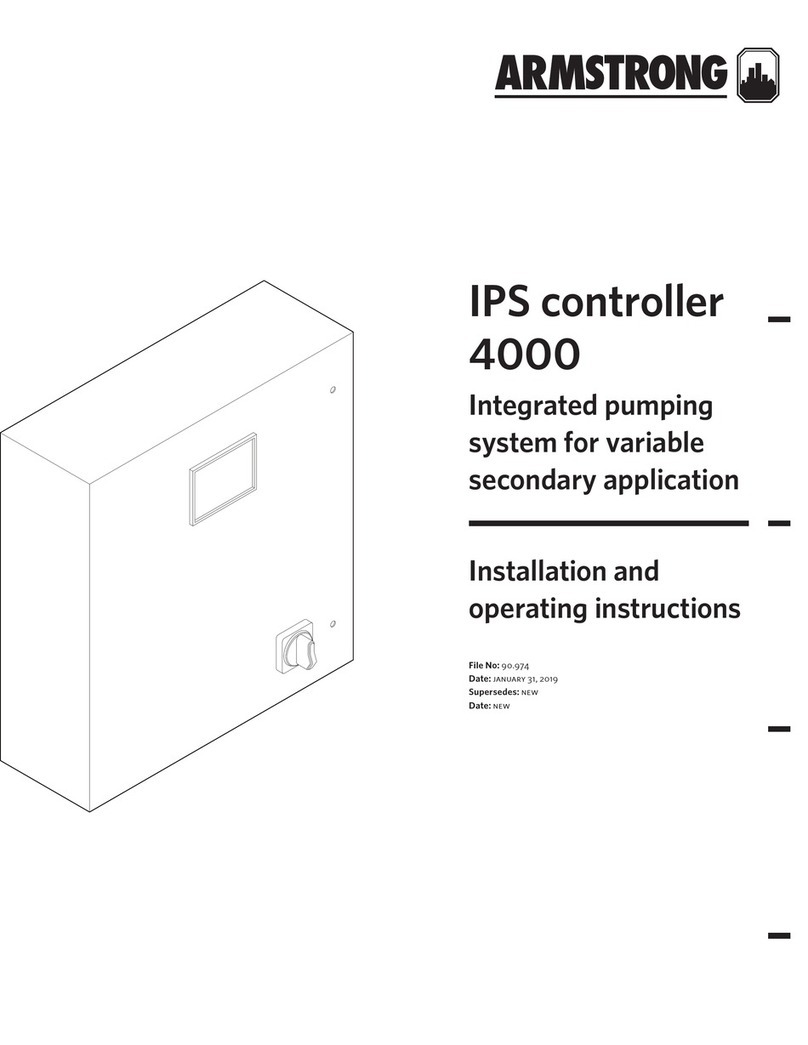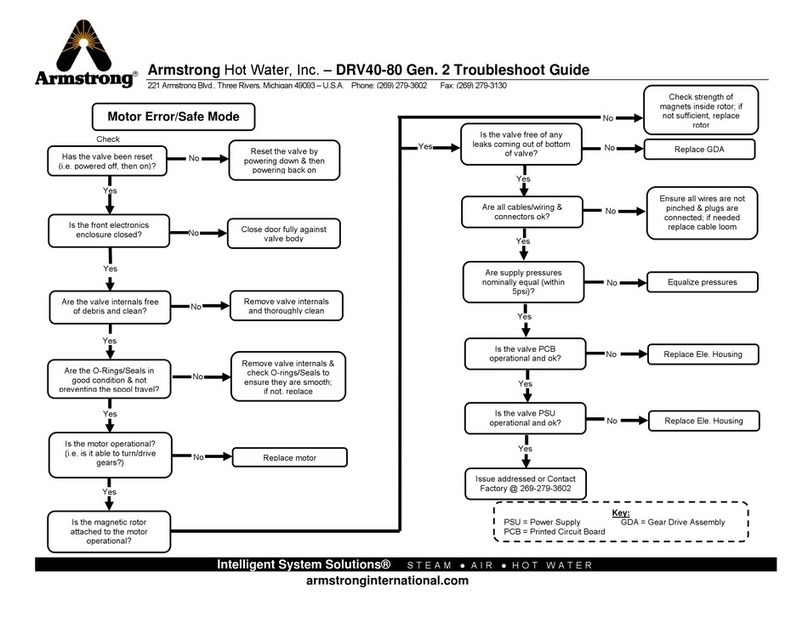
installation &
operating instructions
3750 Pulpress
Pressurisation unit
6
9.0 typical mthw sealed system max. 120°c
The arrangement of the mthw scheme is similar to the lthw
system above but has, in addition, an intermediate vessel
installed between the expansion vessels and the system con-
nection. The volume of water contained in this vessel ensures
that the return temperatures at the boiler are not transferred
to the expansion vessel, where damage to the diaphragm
would otherwise occur.
warning notes
1 Pressure vessels are supplied as loose items with the
pre-charge pressure of 4bar. If the unit is not being
commissioned by Armstrong please make sure the vessel
is charged to the correct pressure.
2 Packed-gland circulating pumps must not be used in
sealed systems.
3 Water treatment must not be added to the system via the
3750 Pulpress break tank.
4 No part of the set, expansion vessel, intermediate vessel
or connecting pipe is to be lagged.
5 Precautions should be taken to ensure that Lock Shield
Valves are protected against unauthorized closure.
6 In any case, the 3750 pressurisation unit should not be
used to fill up an empty system.
10.0 storage
Store in a dry place. Protect against dirt, damage and frost.
11.0 features
1 Maximum system working pressure: 10 bar.
2 Maximum flow temperature: 120°c.
3 Electrical supplies: 1phase, 50 or 60 Hz, 240 volts.
4 Power supply fluctuation: ±10% maximum.
5 Humidity non-condensing: 80% rh up to 31°c decreas-
ing linearly to 50% rh at 40°c.
6 Ambient temperature: +5°c to +40°c.
7 Water supply pressure: 0.8 bar minimum to 6.8 bar
maximum with ballcock fully open.
8 Pump pressure range: 0.5 to 2.7 bar, 0.5 to 5.5 bar and
0.5 to 8.0 bar.
9 System fill pressure: System set point pressure, within
the pump pressure range
10 Maximum water temperature for expansion vessels:
a Continuous 70°c: Above this, intermediate vessels
must be used.
b Intermittent : 100°c
11 Maximum total boiler rating: Refer to graph
12 Break Tank: 21 litre active capacity and manufactured
from polyethylene complete with ball valve to bs 1212 part
2 with type ab air gap to comply with bs en 13076:2003,
wras and model water Bye-laws
12.0 protection
The set must be protected from the formation of condensa-
tion. If there is a likelihood of condensation forming on or in
the control panel then an anti-condensation heater (option
available to order) should be fitted. Contact our service de-
partment for details.
13.0 general notes
1 The sets comprise one or two pumps operating on a
duty/Stand-by arrangement.
2 Each set is sized to bs7074 and custom built for a specific
application, any change in the system conditions shown
may necessitate a change in the design or settings.
3 System must be completely flushed out prior to installing
the unit, to remove any metal particles, dirt etc., which
may damage the set.
4 The system should be pressure tested, to eliminate leaks.
5 Under no circumstances must any attempt be made to in-
troduce water treatment to the system via the break-tank.
6 No part of the set, connecting pipe or expansion vessel(s)
are to be lagged.
7 Fill the system via the quick-fill connection (Supplied by
others). Do not use the set to fill the system
14.0 installation
14.1 mechanical
1 Install the set on a flat and even surface.
2 Site set with sucient space to the front, left and right
sides of the unit for maintenance purposes.
3 Connect the cold water mains supply, via a stopcock, to
the ballcock in the break tank. (Water supply pressure 0.8
bar minimum with ballcock fully open).
4 Arrange break tank overflow pipe to discharge into a con-
venient drain in line with clause 30 of the Water supply
Bye-laws 1989 edition.
5 Make a connection from the set to the return side of the
boiler and suction side of the circulating pump(s). If inter-
mediate vessels are provided these should be fitted in this
connection with the set and expansion vessels connected
to the bottom of the vessel and the system to the top of
the vessel. A manual air vent should be fitted in the pipe
work close to the top of the vessel, see general arrange-
ment drawing provided. Ensure pump(s) are vented by
loosening the vent cap on top of the delivery branch of the
pump. Care must be taken not to over tighten the system
or water inlet connections.
